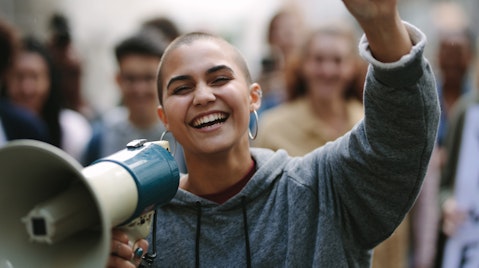IGN learnings
Inclusive voice
Embedding participatory democracy in local decision-making

In recent years, participatory democracy has gained traction as a cultural shift to distributing power and agency, empowering local communities to engage with and participate in decision-making.
The key question is how we move from single experiments to more embedded approaches to participatory democracy. The RSA, leading thinkers in this space, led a workshop to explore how we do this.
Key learnings
Embedding participatory democracy beyond single experiments
- Provide a stakeholder map of key senior decisionmakers across the locality. This will enable citizens to have a clear picture of how decisions are made, who is involved in making them, and where change may be possible at the local decision making level.
- Build a coalition between stakeholders. Follow a three-stage process to bring together stakeholders with competing agendas: (i)establish a shared vision, (ii)establish a shared language, (iii)establish shared metrics. This can help to create shared accountability and, ideally, shared commitment to participatory change.
- Use role-inversion methods. To challenge the ideological, organisational and sectoral barriers between stakeholders and powerholders. An example of this is inverting the Citizens’ Jury model, so a representative group of local stakeholders consider evidence and experience provided by local residents/service users before collectively scrutinising the siloes that may prevent a holistic response.
Enabling participation by underrepresented groups
- Build trust. The NHS have used local community champions to increase access to underrepresented groups and build trust. This also requires a process of capacity and confidence-building for people or groups who may not be comfortable in ‘formal’ participatory spaces.
- Bring participation to people. This can be more effective than asking residents to enter formal spaces.
- Ask questions and gather information. For instance, why do certain groups not get involved? What are the primary barriers to participation?
- Create separate panels (sometimes called ‘enclave deliberation’) for different groups. Greater Manchester has created Citizens’ Panels for LGBTQ+, ethnic minority, disability and other groups. It might be easier to create confidence and trust in these settings and the outputs can be fed into wider engagement processes (as happened prior to the Romsey Citizens’ Assembly).
- Draw on other partners. Consultation doesn't always have to come from the local authority. It can also come from a range of other voluntary spaces. Sometimes the council can simply be the space that enables and catalyses, rather than leads, the dialogue.
Securing internal and external stakeholder support for ambitious participation processes
- Use moments of change to foster participation. The Covid-19 crisis enabled more people to be reached, according to several councils and combined authorities.
- Work with politicians to bring other stakeholders on board. They can also focus on political comms/advocacy, while others focus on designing and delivering the process, creating a mutually supportive division of roles.
- Find allies outside of the council, in partner organisations and other community groups. This can be through formal pre-existing partnerships (i.e. Bristol’s One City Approach), through stakeholder workshops, or through a process advisory group.
- Diversify leadership. This can produce a managerial team with more experience of working with diverse groups and using different non-traditional methods of engagement. See Bristol’s Stepping Up initiative.
Resource Hub
Browse our resource library to find what inclusive growth looks like in practice and how it is benefitting people and places across the UK





